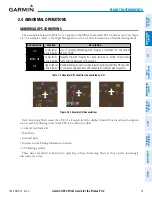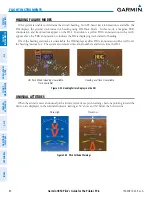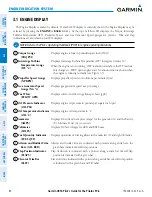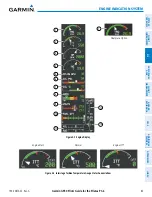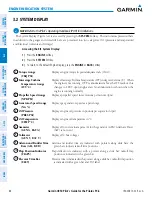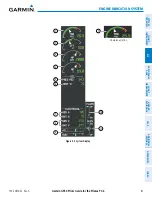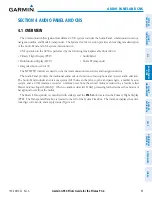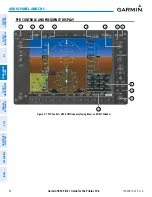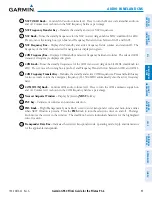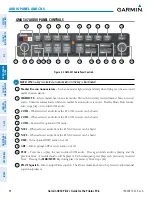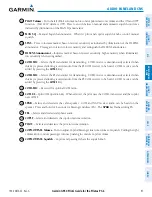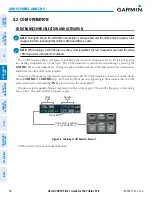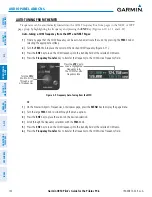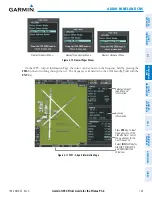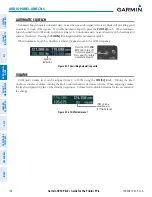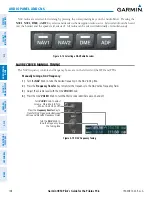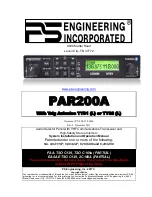
190-00870-02 Rev. A
Garmin G950 Pilot’s Guide for the Pilatus PC-6
93
AUDIO PANEL AND CNS
SY
STEM
O
VER
VIEW
FLIGHT
INSTRUMENTS
EIS
AUDIO P
ANEL
& CNS
FLIGHT
MANA
GEMENT
HAZARD
AV
OID
ANCE
AFCS
ADDITIONAL
FEA
TURES
APPENDICES
INDEX
SECTION 4 AUDIO PANEL AND CNS
4.1 OVERVIEW
The Communication/Navigation/Surveillance (CNS) system includes the Audio Panel, communication radios,
navigation radios, and Mode S transponder. The System Overview Section provides a block diagram description
of the Audio Panel and CNS system interconnection.
CNS operation in the G950 is performed by the following Line Replaceable Units (LRUs):
• Primary Flight Display (PFD)
• Multifunction Display (MFD)
• Integrated Avionics Unit (2)
• Audio Panel
• Mode S Transponder
The MFD/PFD controls are used to tune the communication transceivers and navigation radios.
The Audio Panel provides the traditional audio selector functions of microphone and receiver audio selection.
The Audio Panel includes an intercom system (ICS) between the pilot, copilot, and passengers, a marker beacon
system, and a COM clearance recorder. Ambient noise from the aircraft radios is reduced by a feature called
Master Avionics Squelch (MASQ). When no audio is detected, MASQ processing further reduces the amount of
background noise from the radios.
The Mode S Transponder is controlled with softkeys and the
FMS
Knob located on the Primary Flight Display
(PFD). The Transponder Data Box is located to the left of the System Time Box. The data box displays the active
four-digit code, mode, and a reply status (Figure 4-1).

